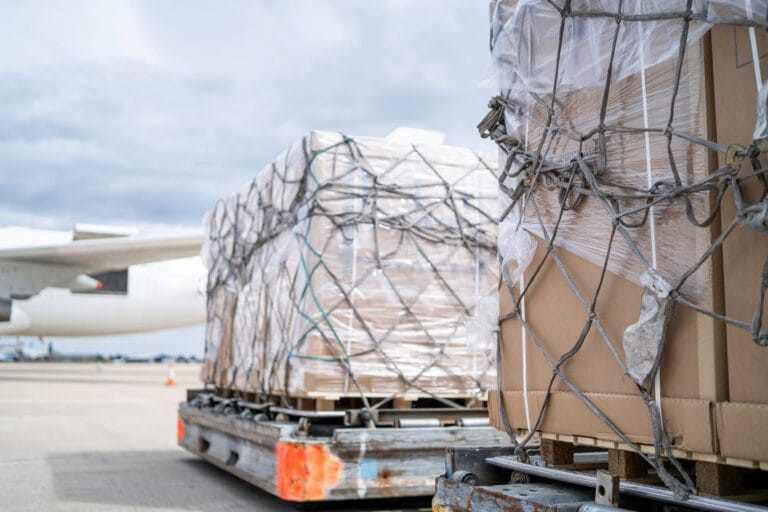President Donald Trump signed an executive order on February 1st imposing a 10% tariff and removing eligibility for use of the de minimis exemption for all Chinese imports to the US. Four days later he temporarily reinstated de minimis for Chinese imports to allow US Customs and Border Protection time to develop adequate systems to process the expected sudden spike in formal entry imports.
With China accounting for around two thirds of the 1.36B de minimis imports into the US last year, the abrupt shift in status of the millions of daily parcels of this type would have quickly overwhelmed customs and led to severe customs congestion and backlogs at US airports. The pause may also serve as a wind down period for B2C small imports from China during which Chinese e-commerce platforms shift away from their heavy reliance on de minimis and air cargo. These platforms have already been increasing their use of ocean freight to build up inventories in Mexico and the US and there are reports that for American shoppers, Temu is already promoting items from sellers with US-based inventory.
The savings and speed that the de minimis exemption affords low-value imports is a key facilitator of the flood of parcels entering the US via this exception mostly by air cargo. E-commerce shipments are accounting for an estimated 50-60% of China – US air cargo volumes and dozens of full freighters each day. Total capacity out of China increased 25% year on year in 2024, so closing de minimis to China is expected to drive a sharp drop in volumes and a spike in available capacity which could push transpacific rates down significantly and could put downward pressure on rates for many other lanes as well as significant capacity is released back into the market.
With de minimis for China reinstated for now rates may not collapse immediately. Prices may remain elevated up until US de minimis is once again closed to Chinese imports or they could ease gradually but significantly as the shift away from air cargo takes place. The latest Freightos Air Index China – N. America air cargo rates remain about unchanged since late January at more than $5.00/kg. But with the Lunar New Year holiday period just ending now, if there is an immediate impact from these recent policy changes on the air market and rates it may only show up in the coming days as manufacturing and logistics restart.
The European Union has also been flooded by low-value Chinese imports since 2023, and officials there have increased scrutiny of Temu and Shein in recent months due to the increase in unsafe products and illegal goods entering the EU in addition to complaints of unfair competition that these de minimis imports facilitate. Last week the European Commission released a list of proposed actions in response to this state of affairs, which included the removal of the de minimis exemption. Changes to de minimis in both the US and EU would have an even more profound impact on air cargo demand and rates.
Back in the US, the China tariff, as well as those now postponed for Mexico and Canada, were punitive in nature, used as leverage for non-trade issues like fentanyl smuggling and illegal immigration. But the president is also moving forward with structural tariffs which are aimed at trade issues. This week President Trump announced 25% tariffs on steel and aluminum imports starting March 4th and his intentions to introduce reciprocal tariffs, and new tariffs on computer chips, pharmaceuticals, copper, and oil and gas imports as soon as mid-February.
His campaign proposal for 60% tariff introductions on all Chinese goods – the process for which was set in motion by Trump’s day one trade memo and could result in action as early as May – is part of this structural tariff strategy. The latest US ocean import volume report from the National Retail Federation shows that starting back in November, US importers have been frontloading shipments ahead of this expected tariff hike, and projects that this pull forward will continue to keep volumes elevated into Q2.
Ocean container rates from Asia to Europe continued to slide last week and at $3,386/FEU are 40% lower than in early January during the lead up to LNY. Shippers on this lane likely pulled forward more volumes than usual ahead of LNY this year to adjust to Red Sea diversions. With few signs of a coming rebound in demand to clear a holiday backlog, demand is likely to continue to ease as this market enters the typical post-LNY lull. Carriers will reportedly increase blank sailings on this lane to prevent rates – already at about the Red Sea adjusted floor hit in 2024 – from falling much further.
Transpacific rates have eased since early January too, but with expectations that frontloading ahead of tariffs will continue we may not see the typical post-LNY pre-peak season demand dip this year. Depending on the strength of the continued pull forward – many shippers have already been stocking up since November – rates could stay around their current elevated levels or climb in the coming weeks as the tariff situation remains uncertain. This unseasonal demand strength could likewise result in unseasonal demand and rate weakness later this year during the typical peak season months.




